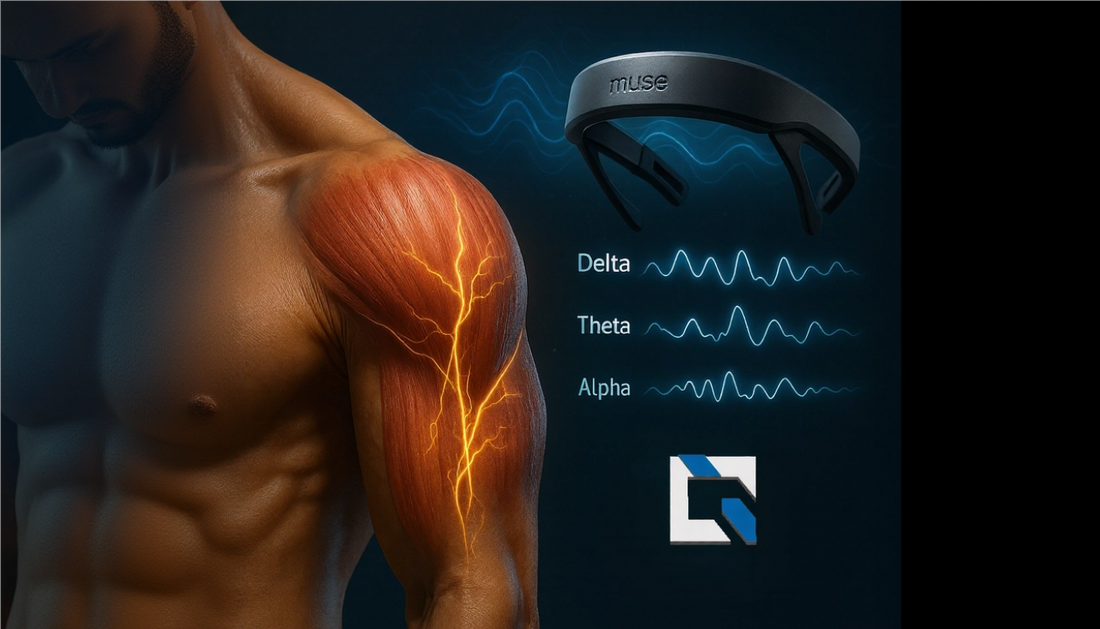
Q-S Technology and neuromuscular activation: first results of a pilot study
Introduction
Q-Technology was designed to act as a catalyst for neuromuscular regulation and postural stabilization.
But how can these effects be measured?
To explore this question, an exploratory pilot study was conducted on August 16, 2025. It aimed to observe the influence of Q-S technology on:
muscle stability,
brain activity (EEG),
and heart rate.
The muscle chosen: the left middle deltoid, used during a manual abduction resistance test (arm raised at 90°).
Methodology
The experiment was conducted using the Muse Athena EEG headset and the MindMonitor app.
Two conditions were compared:
Without Q-S: the muscle quickly released under pressure.
With Q-S: the muscle firmly resisted twice in a row.
Recordings included:
EEG activity (Delta, Theta, Alpha bands),
heart rate,
and observed muscle stability.
Quantitative results (recorded averages)
|
Setting |
Without Q-S |
With Q-S |
Variation |
|
EEG Delta (AF8) |
0.654 |
0.953 |
↑ +45% |
|
EEG Theta (AF8) |
-0.235 |
-0.063 |
↓ |
|
EEG Alpha (TP9) |
0.022 |
0.020 |
≈ Stable |
|
Heart rate (BPM) |
79.8 |
82.8 |
+3 BPM |
|
Muscle stability |
Weak |
High |
Improved |
|
|
|
|
|
Interpretation
Delta ↑ (AF8): The significant increase in the Delta band in the presence of Q-Technology suggests a shift toward a state of parasympathetic regulation and improved neurophysiological stability.
Theta ↓ (AF8): The reduction in Theta activity (often linked to confusion, stress, or poor mental clarity) suggests increased cognitive vigilance.
Stable Alpha (TP9): A constant alpha level is often correlated with balanced mental calm, without drifting toward cerebral hyperactivity.
Heart Rate ↑: A slight increase, likely due to more efficient neuromotor mobilization, rather than stress.
Muscle Stability: Without Q-Technology, the arm dropped rapidly. With Q-Technology, resistance was significantly increased, reflecting enhanced neuromuscular activation.
👉 These results highlight optimized neuromuscular integration and more stable cerebral synchronization in the presence of Q-Technology.
Discussion and Outlook
Even though this pilot study is limited to a single participant, the results are consistent with the initial hypotheses:
improved muscle stability,
brain wave modulation (EEG),
and a direct functional impact on neuromotor performance.
These observations support the idea that Q-Technology not only affects visible posture, but also brain-muscle communication itself.
In practice, this opens up interesting prospects for:
biohacking daily performance,
functional rehabilitation (orthopedics, neurology),
high-performance sport,
and even stress and recovery management.
The next step?
Larger-scale studies, with randomized, controlled protocols, to scientifically validate the impact of Q-Technology on neuromuscular optimization and human health.
